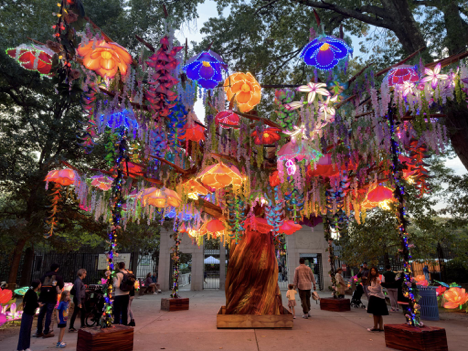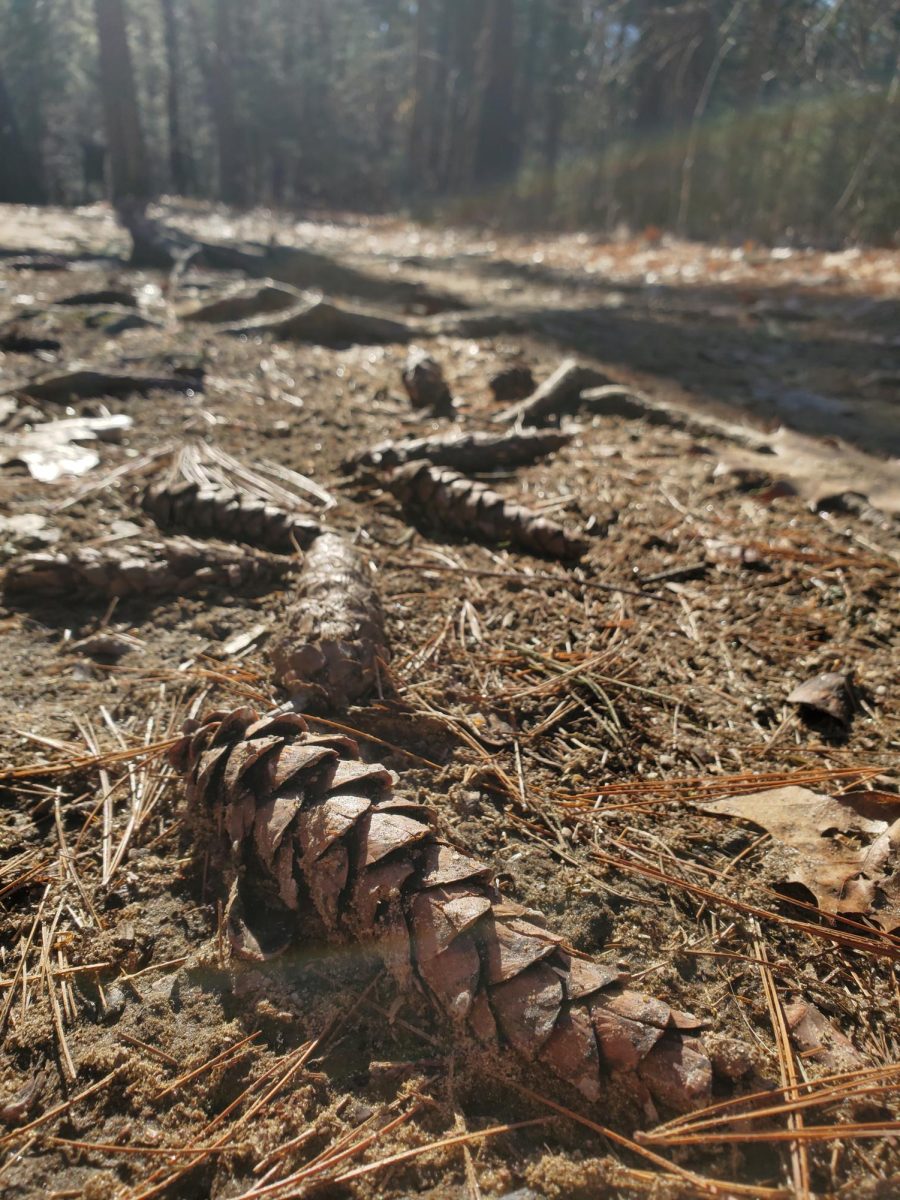Unease Sets in at Westfield in the Aftermath of the University of Idaho Murder
April 7, 2023
Westfield State University students became more worried about their personal safety in the aftermath of the brutal murders of four college students at the University of Idaho in November.
Although anxieties are evident among the student body; In a survey of fifty Westfield students displayed a 60% increase in personal fears for safety after the murders.
The larger worry that stemmed from the media coverage of the case is the looming possibility of active shooters on college campuses which are much more likely to occur than a personal, cold-blooded murder such as this.
“The real issue is why do we have so many guns (over 400 million) in circulation in our society, and what are we going to do about this larger issue of gun safety? I know that the Idaho incident involved a knife, but guns overall, especially military-style weapons, are still the big concern regarding school safety overall,” Dr. Roscoe, Professor of Criminal Justice at Westfield State University, said.
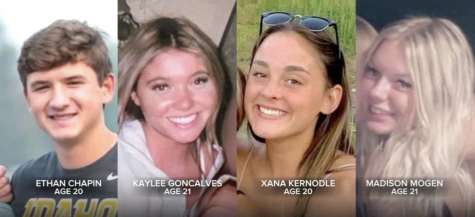
On November 13th, 2022, four University of Idaho students living together in an off-campus residence named Madison Mogen, 21, Ethan Chapin, 20, Kaylee Goncalves, 21, and Xana Kernodle, 20, were brutally murdered. On December 30th, 2022, Brian Kohberger was taken into custody for his suspected involvement in the murders. He has pleaded ‘not guilty’ despite the multitude of evidence against him and at the time of this publication is awaiting trial.
Chloë Sanfaçon, a Westfield State University senior student living in off-campus housing, said that the murders affected her perception of safety.
“My apartment off campus is in a rougher area of the city so my roommates and I are already cautious when it comes to being out in our area, especially at night.”
“I generally feel safe. My perspective has not changed since learning about the murders,” Dr. Kimberly Tobin, Professor in the Criminal Justice Department at Westfield State University, said.
“My biggest concern about campus safety is actually in the mass shooting category, not cold-blooded murder in the Brian Kohberger sense. We have students in varying states of stress and anxiety, as well as some who likely have weapons,” Dr. Tobin added.
In an electronic survey of fifty Westfield State University students, eighteen identifying as male and thirty-two identifying as female, forty have heard about the recent murders.
Of the surveyed population thirty-five students live in on-campus residence halls, seven live in an off-campus apartment in close proximity to the University, and eight are commuter students living outside a ten-minute radius of the University.
When asked if they generally feel safe on campus and in their living situations, sixteen said always, twenty-three said frequently, eight said occasionally, and three said rarely.
Further, when asked if their perception of personal safety changed after learning about the murders at the University of Idaho, twenty-nine said yes, thirteen said no, and eight did not know about the crimes before this survey. 
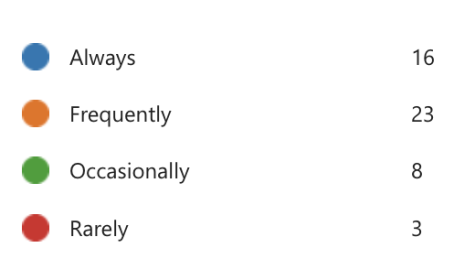
Overall, do you feel safe in your living situation and at the University?

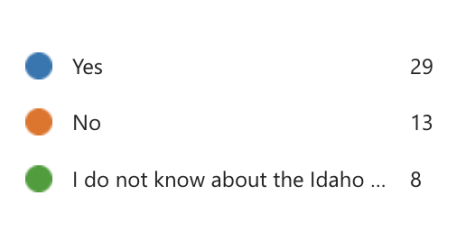
Did your perception of your personal safety change after learning about the murders?
When asked the question of how these murders affected her perspective of living in an off-campus apartment in close proximity to the University just like the victims of this crime, Sanfaçon said:
“My apartment has a front and back door that have the same entry codes on a padlock door knob that we always keep locked. That being said, the code hasn’t changed in years because there are usually students whose renting periods overlap years, meaning that some of the things in my house have been there since 2016.”
“Because the code has been the same for years and people often give it out to their friends (and who knows who they give it out to when there’s a party at our house, for example), I do sometimes worry about how many people technically have access to my house,” Sanfaçon continued.
“Since moving in this past June, I’ve wanted to ask our landlords if we could change it but I figured the process wasn’t worth it. Considering this case now, I may ask them if we can change the codes because it does make me nervous how easily someone could get the code and come into my house,” Sanfaçon said.
She added:
“I haven’t specifically heard any students being concerned about things of this nature happening on campus but I wouldn’t be surprised if there were concerns.”
Aaron Lessing, also a senior at Westfield and Student Government Association President, agreed with Chloë.
“It is a high-profile crime and will likely become a high-profile trial too. Big media is watching, so some students may see this and feel that they are less safe,” Lessing said.
There is a popular rhetoric surrounding this case that Bryan Kohberger utilized his education in Criminal Justice to plan his crime and avoid detection by law enforcement. Aaron, a Criminal Justice major himself, disagreed.
“You’d probably have a better chance at getting away with it in comparison to someone that doesn’t have that education… not ideas, but it could educate them on tactics that law enforcement utilizes which first-time offenders usually aren’t aware of,” Lessing said.
Dr. Roscoe agreed with Lessing.
“I think this is kind of ridiculous. Having gone through a Ph.D. Program myself, I can’t think of anything that I learned that would be of assistance to me if I were similarly directed to commit a murder. Possibly courses could be chosen that would help, but this kind of information could certainly be gained much more quickly and directly over the Internet,” Roscoe said.
“There may be a spurious connection, given that someone who is attracted to the idea of murder might also be attracted to the field of criminal justice. I would add that I never came across anyone in my Ph.D. program whose true career interest wasn’t really either teaching or research, but instead committing mass murder!” Roscoe added.
“This issue certainly should be taken very seriously. Though I wouldn’t rate the likelihood of this kind of event occurring at Westfield to be high, or of extreme concern, preparedness is certainly called for given the trajectory that we seem to be on with gun crimes,” Roscoe said.
Dr. Tobin knows a great deal about the case as she has followed the updates intently. When asked if she thought that this crime will have or already has implications at Westfield, she responded that our Criminal Justice faculty had a similar conversation when the news first broke.
However, “there wasn’t really an answer, except that our students pursue their field of interest due to many motivations (their own history, etc). But there were no inquiries. And we actually had a CJ student who murdered his friend from UMass many years ago—so we know this happens.”
Dr. Tobin is referring to the murder of David Sullivan by Westfield State College student, Bryan Johnston. More information on this 2006 case can be found here.
Dr. Tobin was asked if she thought that Kohberger’s studies were a tactic to plan his future crime so he would not be caught by law enforcement.
“I have a hard time believing this to be true. If he were really concerned about being caught by law enforcement, he would have ensured he didn’t leave a fingerprint on the knife jacket, he wouldn’t have left a technology trail, and he would have diversified his mode of travel to avoid cameras. Or he would have ‘eliminated’ the eyewitness,” Tobin said.
“This is pretty basic ‘detection’ knowledge that you pick up from CSI and Law & Order. My assessment is that he had criminal tendencies, and this led to his interest in pursuing a CJ major,” Tobin said.
“Personally, I think he wanted to get caught – at least subconsciously. What is interesting is the amount of information in the public sphere about how they caught him. This information might help others figure out how to commit a crime undetected,” Tobin added.
Reflecting on WSU’s own Criminal Justice program, Dr. Tobin’s response reflected Dr. Roscoe’s.
“If a student is smart enough and paying attention, maybe. But the students who fall into this category would figure out how to get this information can do it without the classes,” Roscoe said.
“Also, the motivation to seriously commit a crime like murder is more important than anything we are teaching. There has to be the will – which is not what we teach,” Roscoe added.
At the conclusion of the surveys and interviews, all participants were asked to suggest ways that Westfield State University can continue to keep its students safe. A few of these responses included:
“Personally, I believe the doors need to be locked on all campus buildings because they aren’t, and then the question is why do we have our student id cards? We literally had a murder that was on the loose I think two or three months ago when all the elementary and high schools went on lockdown but the university didn’t, so that being said with the doors not being locked they could have easily walked in one of the buildings.” More information on this event can be found here.
One student said, “I think that living on campus is safe and I have no reason to think otherwise.”
“Locking the academic buildings again so that only people who should be there are, more lighting on campus, more shuttle hours, more of a presence of ISO officers at the Apartments and University Hall,” another student said.
“Having shuttles running to and from South lot more often… as a female on campus walking to South lot is very scary especially when shuttles are not running.”
Another student said, “Take concerns about mental health or complaints about feeling unsafe seriously. Have a process to allow students or faculty/staff to express students that may be in a rough place.”
“I believe that all directives coming from the University regarding active shooter training (the real safety concern) should be taken seriously. Students should certainly be encouraged to report any suspicious activities or reasons for concern. I would imagine that they are,” one faculty member said.
“There needs to be a protocol that can be followed when such concerns arise, along with the proper resources for immediate and effective response. Again, I have no reason to believe that these areas are not being addressed, given that I have never had to call on them,” this faculty member continued.
“I think WSU does a really good job protecting its students. Every off-campus apartment gets a visit from the local WPD welcoming them to the city and giving them direct lines in case there are any issues students experience while in their off-campus apartment,” another student said.
“This partnership with the city has been really great for my personal feeling of safety living off-campus. I think more promotion of resources is always helpful, of course,” this student concluded.
Background on the Case
A timeline of the victims’ whereabouts according to CBS News leading up to their murders has been reconstructed by law enforcement. At 9:00 pm on November 12th, Kernodle and her boyfriend Chapin were seen at a party hosted by Chapin’s fraternity, Sigma Chi.
An hour later at 10:00 pm, the couple arrived at The Corner Club, a sports bar in Moscow. Investigators say Kernodle and Chapin return to their three-level house on King Road at about 1:45 am. The other two victims, Mogen and Goncalves, were seen ordering from a food truck before returning to their home at approximately 1:56 am.
Two other housemates, Bethany Funke, and Dylan Mortensen, also were out that night and arrived home before the four victims at around 1:00 am.
The next morning, at 11:58 am, a 911 call was placed by one of the two unharmed housemates requesting services for an “unconscious person.” It is later determined that based on Goncalves’ phone records and the timing of a call placed to her ex-boyfriend, the time of the murders was placed after 3:00 am.
The coroner expressed that the victims were likely asleep at the time of their attack, only some with defensive wounds but each being stabbed multiple times.
More information has since been released regarding the night’s events when confidential court records were unsealed on January 5th, 2023.
NBC News reported that the records detail that an unspecified woman in the house woke up that night to the sound of a struggle. She opened her second-floor door at approximately 4:00 am and saw a man she did not recognize wearing a mask and black clothing, who walked past her toward the home’s exit. She promptly closed and locked her door, but did not inform law enforcement.
The two surviving roommates have been cleared of being involved in the murders. However, law enforcement believed that the attack was targeted.
According to Fox News, authorities went weeks without identifying a suspect and kept information surrounding the murders close to the chest. The murder weapon was also not immediately located, which was believed to be a large-bladed knife. This quadruple homicide has left the small community of Moscow as well as the entire nation in a state of shock.
That is until December 30th, when Bryan C. Kohberger was taken into custody at his parent’s home in the Pocono Mountains of Pennsylvania. He was charged with four counts of first-degree murder and one count of felony burglary. He was extradited to Idaho on January 4th to face the charges against him.
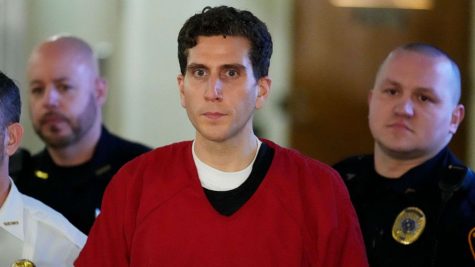
Background on the Perpetrator
According to NPR, 28-year-old Brian Kohberger received his bachelor’s and master’s degree in Criminal Justice at DeSales University, and at the time of the murders he was pursuing his Ph.D. in the field at Washington State University.
Many have cited his degree in Criminal Justice as inspiration for his crime or information as to how to get away with it.
Kohberger appeared again on January 12th with a preliminary hearing set for June 26th, waving his right to a speedy preliminary hearing.
Among the extensive evidence against him is that he allegedly contacted one of the female victims repeatedly in late October, roughly two weeks before the killings, a leather knife sheath with a DNA sample very similar to Kohberger’s father was found under one of the victim’s bed. Additionally, the Hyundai Elantra registered to Kohberger was caught on security footage traveling toward the home around 3:30 a.m., making several passes by the house, and then departing the area around 4:20 am.
Further disturbing, his phone signaled cell phone towers in the area of the King Road house at least 12 times before the homicides, investigators found, including as early as Aug. 21. The phone also returned to the area of the crime scene around 9:15 a.m. on Nov. 13, about five hours after the stabbings, before they had been reported to the police.
In his most recent statement, Kohberger said that he expects to be exonerated.
All of this being said, Westfield State University maintains a very safe campus for its students. To access the University’s public crime log, click here.








